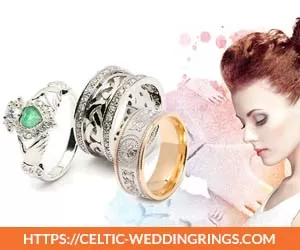The world of Celtic faeries is a captivating and enchanting one, filled with myths, legends, and traditions that have been passed down for centuries. These magical creatures have captured the imagination of people for generations, inspiring tales of wonder and adventure.
| Origins | Types | Role | Conclusion |
From the mischievous leprechauns to the mysterious banshees, Celtic faeries have played a significant role in Celtic folklore and culture. In this article, we delve into the world of Celtic faeries, exploring their myths, legends, and traditions.
The Origin of Celtic Faeries
Celtic faeries have their roots in ancient Celtic mythology and folklore. The Celts were an ancient people who lived in Europe and the British Isles, and their beliefs and legends were an integral part of their culture. The Celts believed that the world was populated by a variety of supernatural beings, including faeries. These faeries were seen as powerful, magical creatures that could bring good luck or misfortune to those who crossed their paths.
The concept of faeries in Celtic folklore has evolved over time, with different cultures and regions adding their own unique twists and interpretations. However, the underlying belief in the existence of these supernatural beings remains a common thread throughout Celtic history.
Types of Celtic Faeries
Celtic faeries come in many shapes and forms, each with their own unique characteristics and powers. Some of the most well-known types of Celtic faeries include leprechauns, banshees, pixies, and fairies.
Leprechauns
Leprechauns are perhaps the most famous of all Celtic faeries. They are mischievous and cunning creatures, known for their love of gold and their ability to grant wishes. Leprechauns are often depicted as small, bearded men dressed in green, with a pot of gold at the end of a rainbow.
Banshees
Banshees are another well-known type of Celtic faerie. They are known as the “women of the sidhe” or “faerie women,” and are said to be the spirits of women who have died a tragic death. Banshees are often associated with death and are said to wail or scream as a warning of impending doom.
Pixies
Pixies are small, playful faeries that are known for their mischievous nature. They are often depicted as tiny, winged creatures with pointed ears and bright, glowing eyes. Pixies are said to live in the woods and fields and are known for their love of music and dance.
Fairies
Fairies are perhaps the most traditional type of Celtic faerie. They are beautiful, magical creatures that are said to have the power to grant wishes and bring good luck. Fairies are often depicted as delicate, winged beings with a passion for nature and the outdoors.
The Role of Celtic Faeries in Celtic Culture
Celtic faeries have played a significant role in Celtic culture for centuries. They have inspired tales and legends, as well as artistic and literary works. From the traditional Irish folktales of leprechauns and banshees to the Victorian-era fairy paintings and poems. The world of Celtic faeries continues to captivate and inspire people of all ages.
In addition to their role in literature and art, Celtic faeries have also played a role in religious and spiritual beliefs. For many people, the belief in faeries is intertwined with their belief in the supernatural and the spirit world. In some cases, faeries were even believed to be messengers from the gods or the afterlife, bringing messages and guidance to those on earth.
The belief in Celtic faeries has also been tied to the celebration of certain holidays and festivals. For example, the festival of Bealtaine, which was celebrated in ancient Ireland, was associated with the arrival of spring and the return of the faeries from their winter slumber. This festival was seen as a time of renewal and rejuvenation, and was celebrated with feasts, bonfires, and offerings to the faeries.
Conclusion
The world of Celtic faeries is a fascinating and enchanting one, filled with myths, legends, and traditions that have been passed down for centuries. From leprechauns to banshees, pixies to fairies, the many different types of Celtic faeries continue to captivate and inspire people of all ages. Whether viewed as powerful, magical creatures or simply as fanciful tales and legends, the world of Celtic faeries will always be a source of wonder and enchantment.
Recommended Reading
These books offer a wealth of information about the world of Celtic faeries, exploring their myths, legends, and traditions. From scholarly works to collections of folktales, they provide a comprehensive look at the fascinating world of Celtic faeries.
- “The Fairy-Faith in Celtic Countries” by W. Y. Evans-Wentz
- “The Complete Guide to Celtic Mythology” by Andrew Walsh
- “The Secret Commonwealth of Elves, Fauns and Fairies” by Robert Kirk
- “Celtic Myth and Legend” by Charles Squire
- “Irish Folk and Fairy Tales” edited by W. B. Yeats
- “The Mabinogion” translated by Lady Charlotte Guest
- “The Celtic Twilight” by W. B. Yeats
- “Celtic Magic” by D. J. Conway
- “Celtic Fairy Tales” edited by Joseph Jacobs
- “Celtic Myths and Legends” by T. W. Rolleston.







